6min 50s Novice Spanish

Why do seismologists change the magnitude of an earthquake?
There are often misunderstandings about why seismologists change the magnitude of an earthquake. The magnitude isn't a simple assessment of a squiggle on a seismogram.
Obtaining an accurate preliminary magnitude can be difficult due not only to the complex processes that occur deep within the Earth, but because there are over a dozen techniques of for calculating the magnitude of an earthquake. In this animation we look at two magnitude scales, and use two examples of magnitude changing.
CLOSED CAPTIONING: A .srt file is included with the download. Use appropriate media player to utilize captioning.
Factors in calculating the magnitude of an earthquake:

The "moment magnitude" scale has replaced the Richter scale for large earthquakes. Scientists have developed far-more sensitive seismometers that, with faster computers, have enabled them to record & interpret a broader spectrum of seismic signals than was possible in the 1930's, when the Richter magnitude was developed. Find out what scientists learn from seismograms.
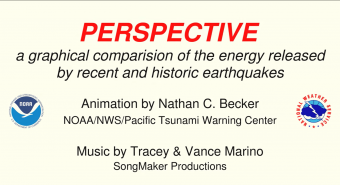
This animation, created by NOAA's Pacific Tsunami Warning Center, graphically compares the relative "sizes" of some 20th and 21st century earthquakes by their moment magnitudes. Each circle's area represents its relative energy release, and its label lists its moment magnitude, its location, and the year it happened.
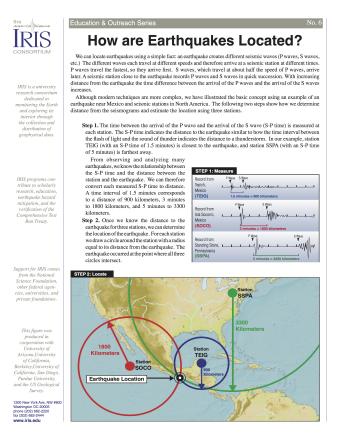
Knowing precisely where an earthquake occurred is an important piece of scientific information. It can help seismologists identify and map seismic hazards. It is also a fundamental piece of information necessary for facilitating studies of Earth's internal structures. This fact sheet provides an overview of the S-P process to locate an earthquake.
NOTE: Out of stock; self-printing only.
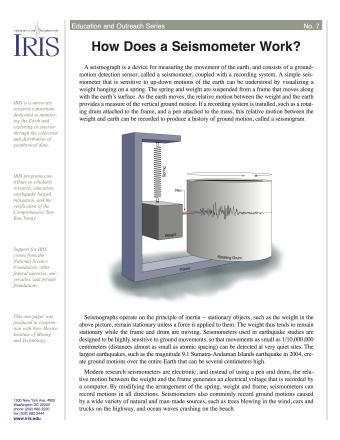
A seismograph is a device for measuring the movement of the earth, and consists of a ground-motion detection sensor, called a seismometer, coupled with a recording system. This fact sheet provides an overview of the basic components of a seismometer and physical science principles behind its operation.
NOTE: Out of Stock; self-printing only.
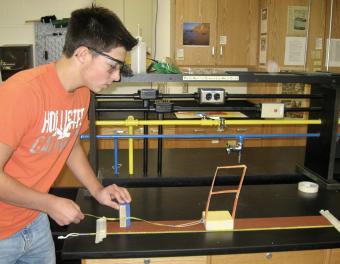
Using a block-and-sandpaper model, students collaborate in small groups to investigate how energy is stored elastically in rocks and released suddenly as an earthquake (the earthquake cycle). This activity emphasizes the role of mechanical models in understanding and testing ideas in science.

In this activity students use a mechanical fault model to collect empirical data, develop logical arguments about earthquake re-occurrence, and skeptically review other groups arguments.
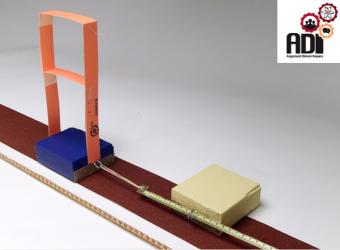
This Argument-Driven Inquiry (ADI) investigation allows students to explore and explain the occurrence of earthquakes and quantify the hazards they present. Students use a physical model, the earthquake machine, to explore the inputs and outputs of a natural system in Earth, to generate empirical evidence about the behavior of that system, and predict how that system may behave in the future.
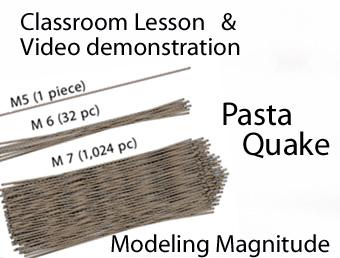
Learn about the earthquake magnitude scale and changes in the amount of energy released at each step by breaking different size bundles of uncooked spaghetti noodles! Students can both see and feel the differences in the energy released from a M4 - M8 quake.

Apply the basics of seismic reflection principles to interpret a geologic framework, conduct a data analysis, prospect for hydrocarbons, and then assess whether the basin should be bid on and provide an economic analysis.
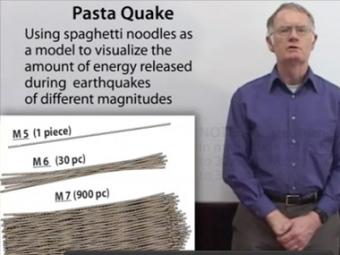
Understanding the magnitude change, thus the relative energy released from say, magnitude 7 to magnitude 8 can be challenging. Dr. Robert Butler (Univ. of Portland) uses spaghetti to illustrate the concept by breaking pasta to show how each step up in magnitude represents a huge jump in the size of the pasta bundles. Each step in magnitude is represented by 32 times more spaghetti noodles.